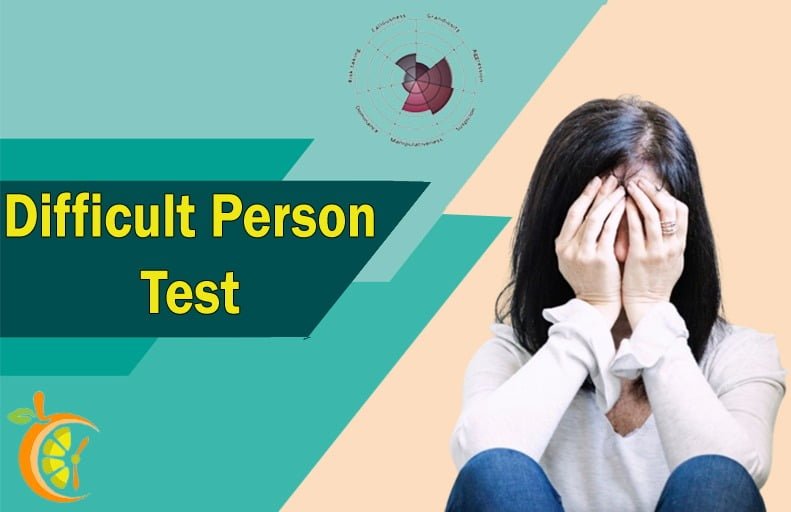Dealing with difficult people is never easy, and their behavior can significantly affect those around them personally and professionally. We cannot always avoid interacting with these individuals, from coworkers to family members. Recognizing the personality traits of people and developing strategies to overcome their behavior can be crucial in maintaining a healthy relationship. The complication is identifying these individuals’ negative characteristics and handling them effectively.
In this article, we delve into difficult people’s various traits and behaviors and how taking the difficult person test can help you better understand them.
Who is a Difficult Person?
A difficult person is an individual who presents challenging behavior or personality traits that make interactions with them unpleasant or hard. They may display aggression, passive-aggressiveness, inflexibility, or unpredictability. Dealing with difficult people can be challenging.
Understanding their behavior patterns and identifying traits can help individuals navigate tough situations effectively. Notably, labeling someone as a “difficult person” should be used cautiously, as it can be subjective. It also needs to reflect the individual’s experiences and perspectives fully.
What is a Difficult Person Test?
A Difficult Person Test is a tool designed to help individuals identify the behavior patterns of difficult people and gain insights on how to deal with them effectively. This assessment typically involves a series of questions that evaluate an individual’s ability to handle various difficult scenarios. It identifies traits associated with difficult personalities.
Individuals can better understand their strengths and weaknesses in dealing with difficult people by taking the test. It gives insight into communication and conflict resolution strategies applicable in personal and professional contexts.
Who introduces The Difficult Person Test?
There needs to be a specific individual or organization that introduces The Difficult Person Test. Various sources, such as human resource departments, counselors, therapists, or psychologists, may present and use this assessment. Online resources also provide versions of the test. The credibility of the test depends on the source providing it. It is always important to ensure that the reference is reputable.
How to Take the Difficult Person Test?
To take the Difficult Person Test,
- You can search for online resources or test providers that offer this assessment.
- The test typically involves a series of multiple-choice questions that evaluate your responses to various scenarios involving difficult people.
- You can complete the test at your own pace, which generally takes 10-15 minutes.
- Once you have completed the test, you will receive a report with insights into your strengths and weaknesses in dealing with difficult people.
- It is important to note that while the test can provide valuable insights, it should not replace professional advice or counseling.
What is the pattern of a Difficult Person Test?
The Difficult Person Test aims to provide individuals with valuable insights and strategies for dealing with problematic people. The practice typically involves a series of multiple-choice questions that present various scenarios involving difficult people. The questions may ask individuals to evaluate their response to a situation, such as dealing with an aggressive coworker or resolving a conflict with a friend.
The answers are then examined to determine behavior patterns and provide insights into adequate communication and dispute solution techniques. The test may include additional resources, such as articles or videos. These help people further develop their skills and familiarity with difficult personalities.
Traits of Difficult People
Here are some common characteristics associated with difficult people:
Aggressiveness:
Challenging people may display aggressive behavior, such as screaming, interrupting, and utilizing physical gestures. They may try to intimidate others to get their way and may resort to angry outbursts when things don’t go as they want.
Passive-aggressiveness:

Some difficult people may instead display passive-aggressive behavior such as sarcasm, backhanded compliments, or silent treatment. They may be avoidant or dismissive but still have an antagonistic attitude.
Inflexibility:
Difficult people may be rigid in their ways and resistant to change or new ideas. They may hold stubborn and uncompromising views, leading to conflicts and resentment.
Negative Attitude:
Difficult people may be pessimistic, complain and find fault with others or the situation.
Lack of Empathy:
They may have a lack of empathy towards others and may dismiss or belittle the feelings and opinions of others.
Manipulative Tendencies:
Some difficult people may manipulate others to get their way, using guilt, shame, or emotional blackmail.
It is important to mention that these are general traits, and not all difficult people will display all of these traits. Different factors, such as cultural background or life experiences, may influence some features.
How Can It Be Helpful to Difficult People?
People can modify and devise more positive relationships with others by recognizing their difficult behaviour patterns. Effective communication skills help them constructively express their needs and concerns. It improves personal and professional interaction outcomes.
It will assist in learning dispute settlement techniques to navigate hard situations without resorting to aggressive or passive-aggressive behavior. This will lead to more cooperative relationships. Addressing their difficult behavior can improve their overall well-being and quality of life.
Advantages of the Difficult Person Test
The Difficult Person Test has several advantages that may make it worthwhile in individual and experienced settings. Here are a few benefits of this assessment:
Identification of behavior patterns:
The examination can help individuals identify their behavior patterns when interacting with difficult people. This understanding can support them in better comprehending how their behavior affects others and making positive changes.
Improved communication skills:

By learning effective communication skills, individuals can express themselves clearly and respectfully, leading to better communication and cooperation.
Increased empathy:
The test can encourage individuals to develop greater empathy towards others. It directs to more favorable and humane connections.
Improved conflict resolution skills:
Learning how to address contentions constructively can aid individuals in dealing with tough circumstances and people more effectively.
Professional development:
Employers may use the test as a tool for professional development or to identify potential workplace issues.
The Difficult Person Test can be a valuable tool for improving communication, conflict resolution, and relationship-building skills.
Conclusion:
To conclude, while the test can highlight areas needing improvement, it should be used as a guide. It is important to approach “difficult people” cautiously, as it is a subjective label that may not fully reflect the individual’s experiences or perspective. Individuals can enhance their overall wellness and quality of life by developing empathy and communication skills and better navigating difficult situations in their personal and professional lives.


